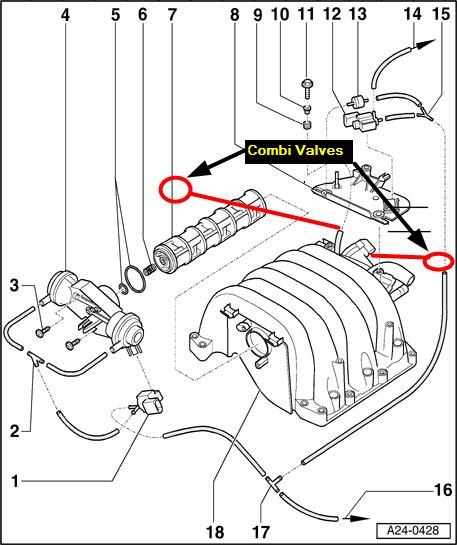You may have to check the valves to which the vacuum lines connect. Don't know how to do this but I found this guide on the interwebs:
https://www.dropbox.com/s/h1pzsic1hs...0over.pdf?dl=0
In the meantime I came up with a way to lock valve into low RPM setting;
1) Disconnect hose
https://drive.google.com/open?id=0B-...HV0VW1jQ0Z5ams
2) Insert about a foot long 3.5mm inner diameter silicone hose (Verocious Motorsports)
https://drive.google.com/open?id=0B-...U1TaWVkNmx0R0k
3) Suck on hose until valve fully rotates
https://drive.google.com/open?id=0B-...FNaX2pyV0NMQUE
4) Crimp hose to hold vacuum and use a screw to plug. (Donor screws from your inner wheel wells fit perfectly)
https://drive.google.com/open?id=0B-...Vl5dVdtZ09EWGs
5) Plug the hose leading out from N-156 valve with another donor screw. (Not sure how important this is or if it will cause problems, but don't feel too comfortable with an open-ended hose)
Results
I test drove car for a couple of minutes around block and the car pulled like never before! Will test drive it more thoroughly (e.g. highways) and report back. I only have VCDS-lite but I'll run a scan to see if this set-up causes any codes. If no adverse effects (e.g. DTC's, misfires, gas consumption, overheating, etc.) from this "modification", then I would highly recommend doing it if your actuator and rotating valve aren't functioning.
Sent from my iPhone using Audizine mobile app













 Reply With Quote
Reply With Quote
















Bookmarks